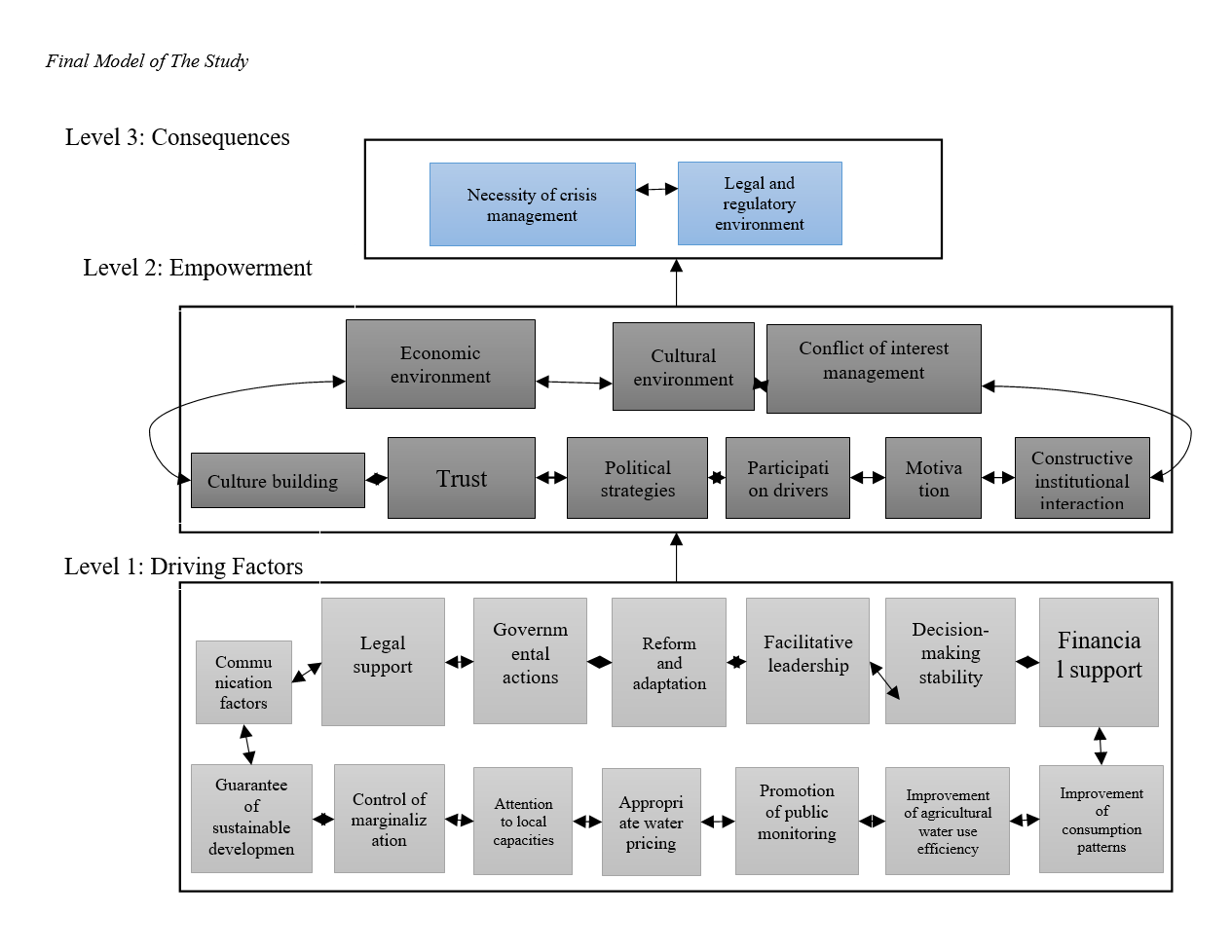Identification of Water Crisis Management Policy Indicators in the Country Based on the Interpretive Structural Modeling (ISM) Approach
Abstract
Objective: The aim of the present research was practical in terms of its objectives and descriptive-survey in terms of its data collection method, utilizing an Interpretive Structural Modeling (ISM) approach.
Methodology: The participants of this study were 15 managers, policymakers, and water sector experts, who were purposefully invited to participate in this research. The tool used in this investigation was a closed-response questionnaire in a matrix format. The criterion for expertise at this stage was the respondent's professional legitimacy.
Findings: The results of implementing the research model indicate that the most important components of the study include legal and regulatory environment factors, economic environment, cultural environment, conflict of interest management, culture building, participation drivers, trust, political strategies, crisis management necessity, constructive institutional interaction, motivation, communication factors, governmental actions, reform and adaptation, facilitative leadership, decision-making stability, financial support, guarantee of sustainable development, control of marginalization, attention to local capacities, appropriate water pricing, promotion of public monitoring, improvement of agricultural water use efficiency, consumption pattern improvement, and legal support.
Conclusion: Therefore, issues such as economy and budgeting, healthcare, welfare and social security, education, energy, environmental damage, foreign policy, and national internal security, as well as threats to occupational and job security, or matters like insufficient access to healthcare services should be examined by the government, the private sector, and the commitment of individuals and companies, or a combination of both.
Downloads

Downloads
Additional Files
Published
Submitted
Revised
Accepted
Issue
Section
License
Copyright (c) 2024 Seyed hasan Mahdavifar , Baharak Shirzad Kebria (Author); Fatemeh Hamidifar (Corresponding Author); Abbas khorshidi (Author)

This work is licensed under a Creative Commons Attribution-NonCommercial 4.0 International License.















